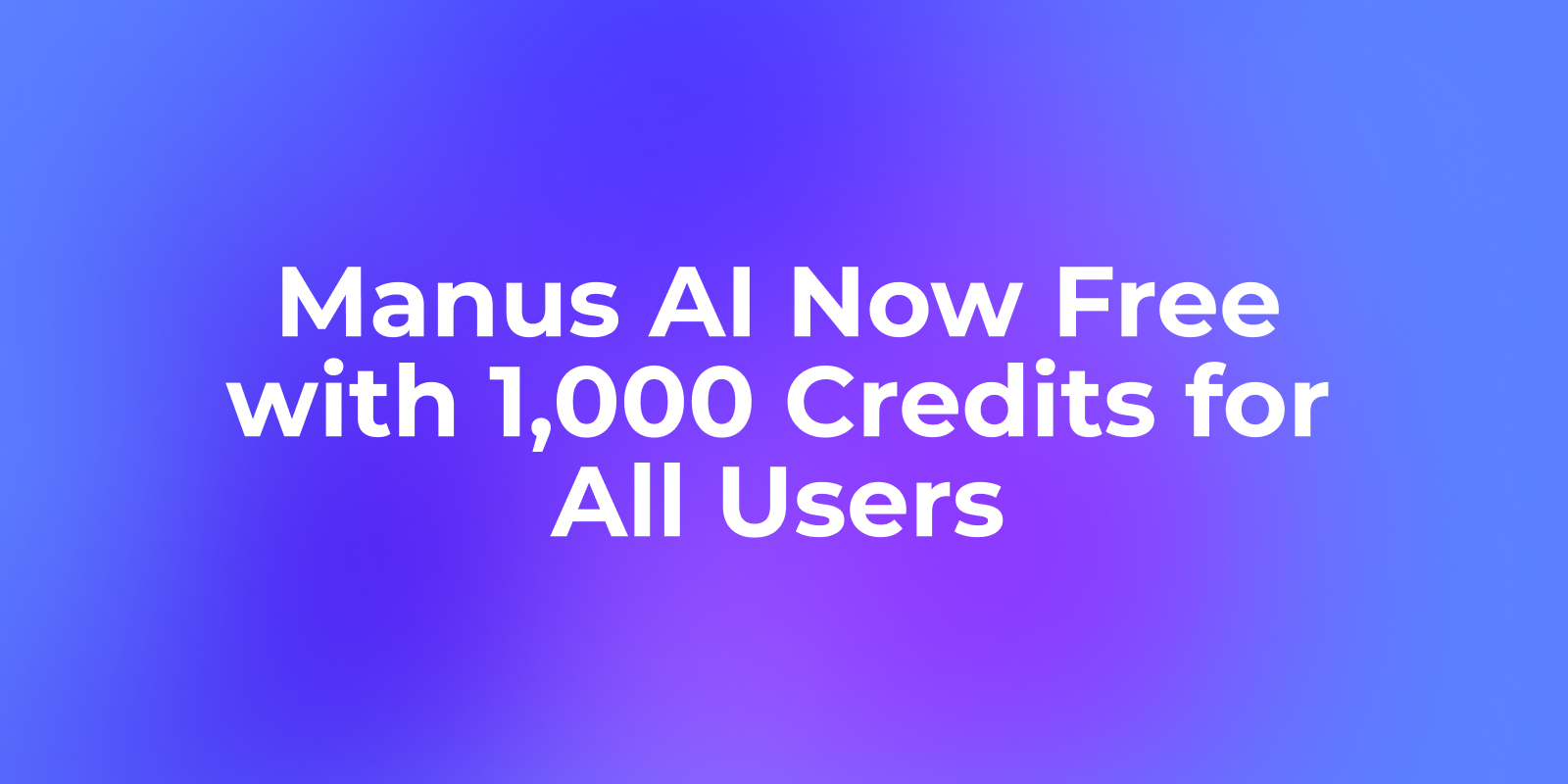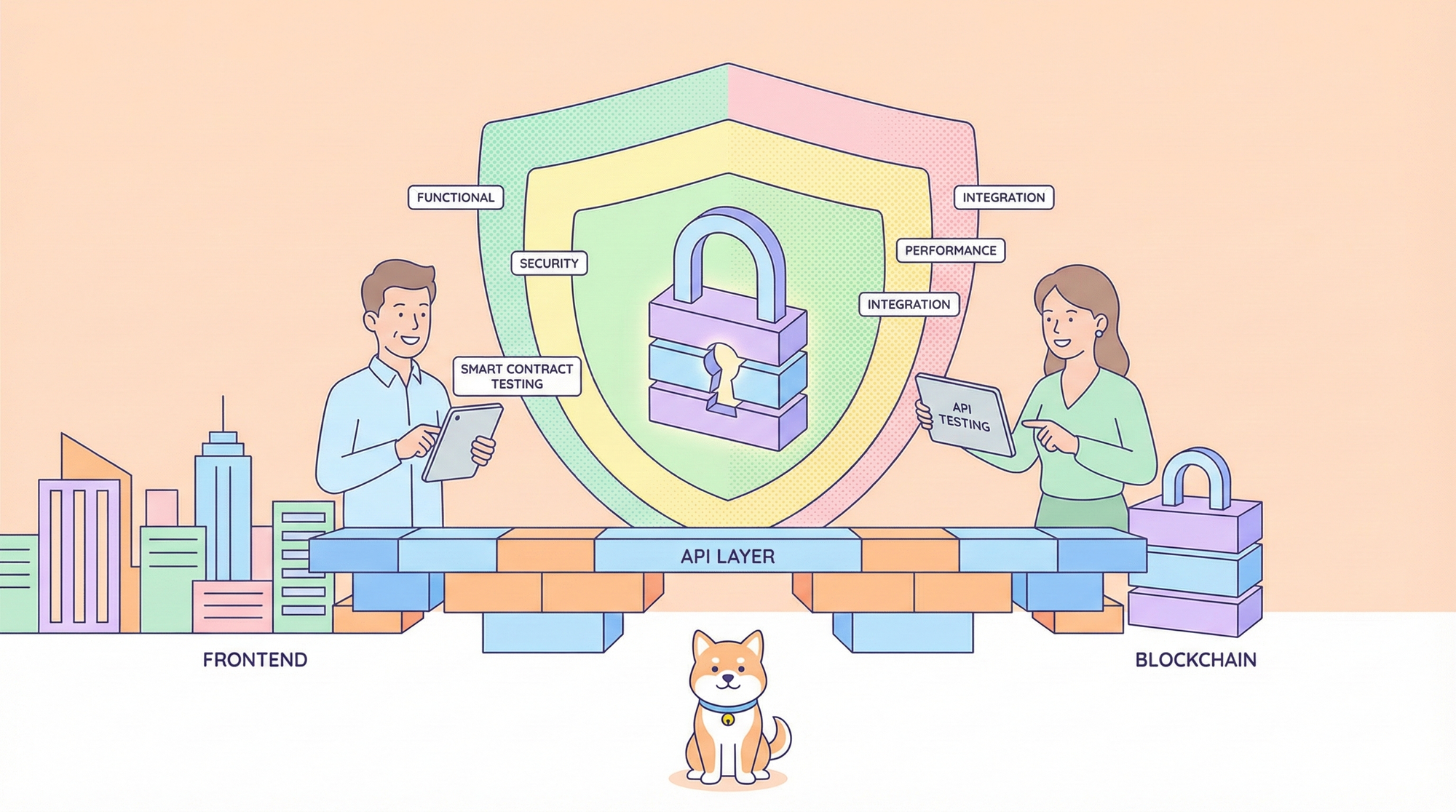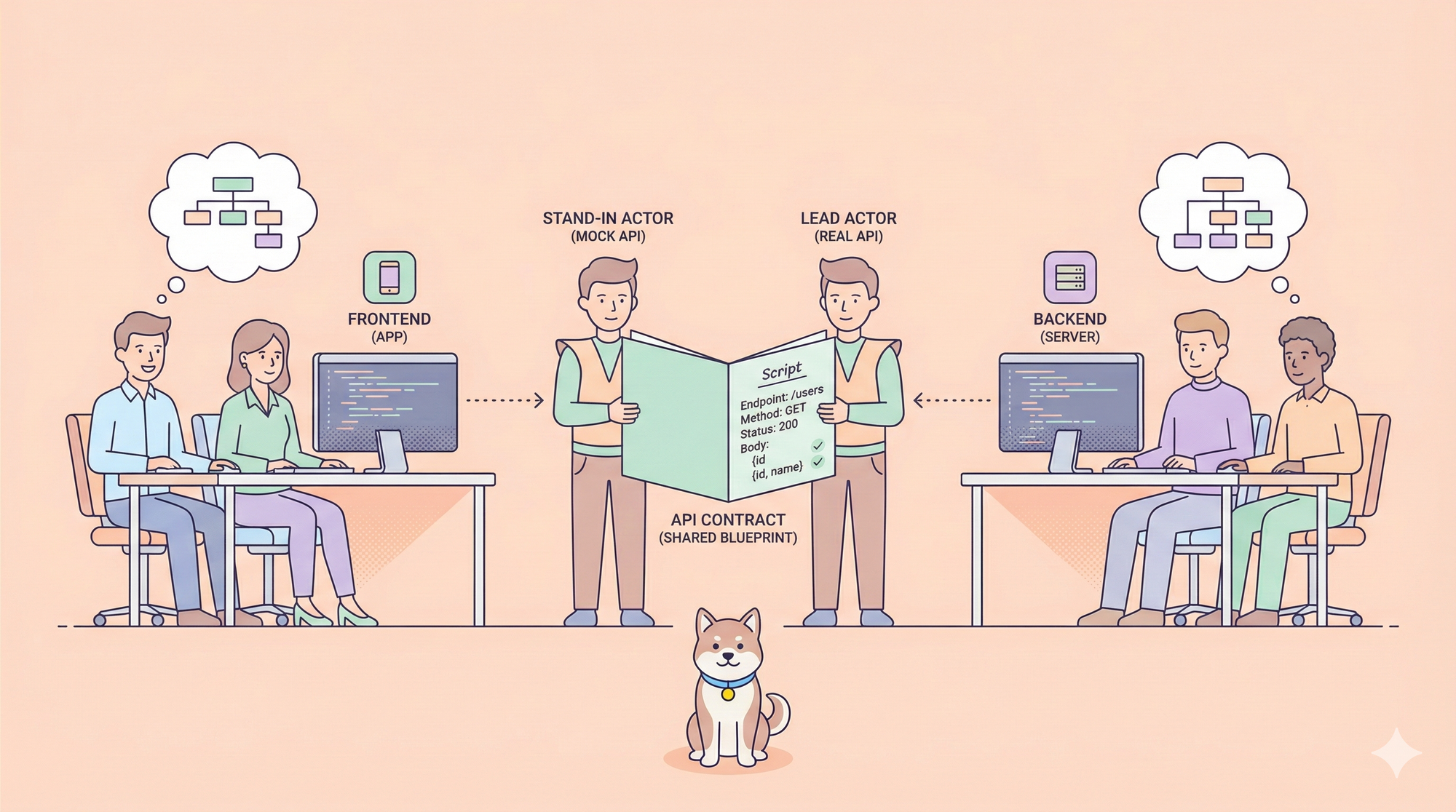In a move that has the developer community buzzing, Manus AI has announced the removal of its waitlist system and is now offering generous free credits to all users. Starting immediately, everyone can access this powerful autonomous agent with 1,000 bonus credits and 300 daily credits that refresh at midnight.
Starting today, we're launching additional access to Manus!
— ManusAI (@ManusAI_HQ) May 12, 2025
- Available to all with no waitlist
- One free daily task for all users (300 credits)
- A one-time bonus of 1,000 credits for all users
More value, more flexibility. Log in to Manus now and explore! pic.twitter.com/2ScXwdexUF

Unlike traditional AI assistants that require constant input and guidance, Manus AI stands apart as a truly autonomous agent. Developed by Monica (also known as Butterfly Effect AI), this next-generation tool doesn't just respond to prompts—it actively thinks, plans, and executes complex tasks independently. For developers and API specialists, this represents a significant shift in how AI can be integrated into coding workflows.
The timing couldn't be better for those looking to explore AI-powered development tools without financial commitment. While many AI platforms limit their free tiers to basic functionality, Manus is providing substantial access to its full capabilities.
What makes this particularly valuable is Manus AI's proven performance. The system has excelled in the GAIA benchmark—a rigorous testing framework co-developed by Meta AI, Hugging Face, and AutoGPT—and reportedly outperforms OpenAI's Deep Research in several key metrics. This means developers aren't just getting free access to an experimental tool, but rather a production-ready AI system capable of handling sophisticated coding challenges.
How Manus AI Transforms Coding and Development Tasks
For developers looking to leverage Manus AI's free credits, understanding its coding capabilities is essential. Unlike simpler code completion tools, Manus functions as a comprehensive development partner that can handle entire programming workflows from concept to implementation.
Manus excels at code generation across multiple languages and frameworks. Its multi-modal capabilities allow it to work with text, images, and code simultaneously—making it particularly valuable for full-stack development projects. When given a high-level goal, the system can break it down into logical steps, generate the necessary code, and even test its functionality.
Some of the coding tasks Manus handles efficiently include:
- Complete application development: As demonstrated in usage examples, Manus can build entire web applications, such as a daily sky events app with location-based reporting (consuming approximately 900 credits over 80 minutes)
- Website creation and deployment: The system can design, code, and deploy websites, like an elegant wedding invitation page (using about 360 credits in 25 minutes)
- Data visualization and analysis: Developers can task Manus with creating complex data visualizations, such as NBA player scoring efficiency charts (requiring roughly 200 credits in 15 minutes)
What sets Manus apart from other coding assistants is its tool integration capabilities. The system connects seamlessly with:
- Code editors for development tasks
- Web browsers for research and reference
- Databases for structured data handling
This integration allows Manus to function as a true development partner rather than just a code generator. The asynchronous cloud processing feature is particularly valuable—once assigned a coding task, Manus continues working in the cloud even if you close your browser, making it ideal for complex development projects that would otherwise require constant supervision.
Integrating Manus AI with Apidog's LLMs.txt for More Efficient Code Generation
While Manus AI's free credits offer tremendous value for general coding tasks, developers working with APIs can unlock even greater potential by pairing Manus with Apidog's LLMs.txt feature. This powerful combination creates a seamless workflow between AI-generated code and API documentation, addressing one of the most challenging aspects of modern development.
LLMs.txt is a new standard designed to make web content, particularly API documentation, more accessible to AI systems. When developing applications that rely on APIs, AI assistants often struggle with complex HTML structures, navigation elements, and JavaScript code that clutter traditional documentation. Apidog's LLMs.txt feature eliminates this friction by providing clean, structured Markdown content specifically optimized for AI consumption.
Here's how developers can leverage this powerful integration:
- Feed AI-friendly API documentation to Manus: Simply append
.mdto any API documentation URL (should be published via Apidog) or use the "Copy page" button to grab Markdown content (Pro tip: You may need to create your own API documentation using Apidog first.) - Use Manus AI to generate API-related code: Utilize your free credits to have Manus create client libraries, API wrappers, or integration code

- Get more accurate code generation: With clean, structured documentation, Manus can better understand API specifications and generate more precise code
This integration is particularly valuable for teams working with complex APIs. Rather than manually summarizing API details for AI tools, developers can rely on Apidog's LLMs.txt feature to provide API documentation in a format that AI systems can easily process.
Apidog's LLMs.txt implementation offers several key benefits that complement Manus AI's capabilities:
- Markdown Format Access: Every API documentation page in Apidog can be accessed in Markdown format by simply adding
.mdto the URL - One-Click Copy Functionality: Users can copy the Markdown content of any page with a single click
- Automatic LLMs.txt Generation: The system automatically generates a complete LLMs.txt index file for documentation sites
- Reduced Token Usage: Clean Markdown content eliminates unnecessary HTML/JavaScript, saving precious context window space
By combining Manus AI's autonomous coding capabilities with Apidog's AI-friendly documentation, developers can create a workflow that maximizes productivity while improving code accuracy. The 1,000 free Manus credits provide an ideal opportunity to explore this powerful combination without financial commitment.
Understanding Manus AI Credits: How Far Will 1,000 Free Credits Take You?
With Manus AI now offering 1,000 free credits to all users, developers need to understand exactly what this means for their coding projects. Credits serve as the standard unit of measurement for Manus usage, with more complex or lengthy tasks requiring more credits.
Credits are primarily consumed based on three factors:
- LLM tokens: Used for task planning, decision making, and code generation
- Virtual machines: Powering cloud environments that support file operations, browser automation, and code execution
- Third-party APIs: Accessing external services that may be needed for your development tasks
Importantly, credits are only consumed during active task processing. Once your code is generated or your application is deployed, no additional credits are used for storage or maintaining the outputs. This means you can keep your completed code projects without worrying about ongoing credit consumption.
To give developers a practical understanding of how far 1,000 credits might stretch, consider these real-world coding examples:
| Project Type | Complexity | Duration | Credits Used |
|---|---|---|---|
| Data visualization (NBA player chart) | Standard | 15 minutes | 200 |
| Website with code (Wedding invitation) | Standard | 25 minutes | 360 |
| Web app with data integration | Complex | 80 minutes | 900 |
With the free 1,000 credits, a developer could potentially complete one complex coding project or multiple smaller ones. Additionally, the 300 daily credits that refresh at midnight provide ongoing opportunities to handle routine coding tasks without depleting your bonus credits.
For developers who find themselves needing more resources, Manus offers several paid subscription options:
- Basic plan: 1,900 credits per month
- Plus plan: 3,900 credits per month
- Pro plan: 19,900 credits per month
These plans are comparable to other AI coding assistants in the market but offer the advantage of Manus's autonomous capabilities, potentially delivering more value per credit through reduced developer intervention.
Getting Started with Manus AI Free Credits for Your Next Coding Project
Taking advantage of Manus AI's free credits for your development work is straightforward. The platform has removed its waitlist, making it immediately accessible to all developers interested in exploring its coding capabilities.
Here's how to get started:
- Visit the Manus website at https://manus.im/app and create a free account
- Claim your 1,000 bonus credits which will be automatically added to your account
- Start with a simple coding task to familiarize yourself with the platform's capabilities
- Monitor your credit usage to understand how different coding tasks consume resources
For developers looking to maximize the value of their free credits, consider these strategies:
- Break larger projects into smaller tasks: Rather than tackling an entire application at once, use Manus for specific components or functions
- Leverage the daily 300 credits: Use these refreshing credits for routine tasks, saving your bonus credits for more complex work
- Combine Manus with other tools: Integrate with platforms like Apidog and its LLMs.txt feature to create more efficient workflows
It's worth noting that Manus AI excels at autonomous execution. Unlike traditional coding assistants that require constant guidance, Manus can take a high-level goal and break it down into actionable steps. This means you can describe your desired outcome and let the system handle the implementation details, saving both time and credits.
The platform's multi-modal capabilities also make it ideal for projects that combine code with other elements like data visualization or user interface design. By providing comprehensive instructions that include both coding requirements and design considerations, you can get more complete results from a single task.
Conclusion: Embracing the Future of AI-Powered Development
The announcement of Manus AI's free credits marks a significant moment in the evolution of AI-assisted development. By removing the waitlist and offering 1,000 bonus credits plus 300 daily credits to all users, Manus has democratized access to advanced autonomous AI for coding and development tasks.
As AI continues to evolve, the line between human and machine contributions to development will increasingly blur. Tools like Manus, especially when paired with Apidog's AI-friendly documentation capabilities, give us a glimpse of this future—one where developers can focus on high-level design and innovation while AI handles implementation details with unprecedented accuracy.



